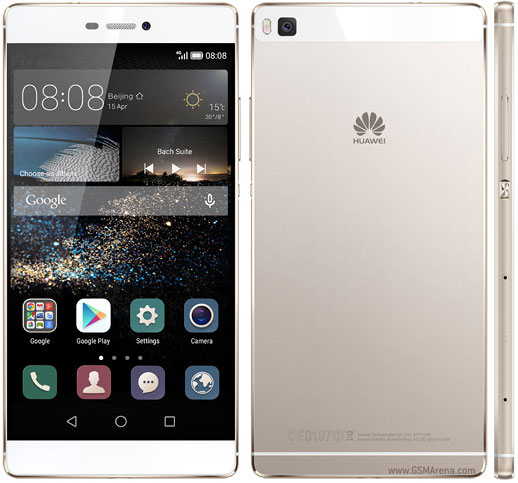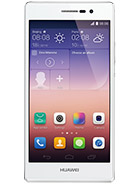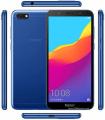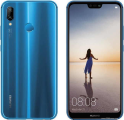Huawei P8 Prices
Important Note.
- All prices are in Pakistani Rupee (PKR)
- Prices may vary at stores and our effort will be to provide you with the updated prices.
- The latest price of Huawei P8 was obtained on 17 مئی, 2019. The prices at the original stores had been updated on the respective mentioned dates.
- Find out WhatMobile price has dropped in Pakistan by selecting Notify Price Drop button
- Find out WhatMobile has better specifications by clicking Add To Compare Button find out what Mobile has better reviews by visiting our reviews section
- Find out WhatMobile is cheaper on which retailer by clicking Compare prices from retailers button
Search Terms
- Huawei P8
Specifications
| GENERAL | |
| 2G Network | GSM 850 / 900 / 1800 / 1900 |
|---|---|
| 3G Network | HSDPA 850 / 900 / 1900 / 2100 |
| 4G Network | LTE 800 / 900 / 1800 / 2100 / 2600 (Bands 1, 3, 7, 8, 20) |
| Sim | Yes |
| Announced | 15/04/2015 |
| Status | Exp. release 2015, Q2 |
| BODY | |
| Dimensions | 6 mm thickness |
| DISPLAY | |
| Display Size | 5.2 inches |
| MultiTouch | Yes |
| Protection | Corning Gorilla Glass 3 - Emotion UI |
| SOUND | |
| AlertTypes | Vibration; MP3, WAV ringtones |
| LoudSpeaker | Yes |
| 3.5mm jack | Yes - Dolby Digital Plus |
| MEMORY | |
| CardSlot | microSD, up to 64 GB |
| Internal | 16 GB, 3 GB RAM |
| DATA | |
| GPRS | Yes |
| EDGE | Yes |
| Speed | HSPA 42.2/5.76 Mbps, LTE Cat4 150/50 Mbps |
| WLAN | Wi-Fi 802.11 a/b/g/n, dual-band, Wi-Fi Direct, DLNA, hotspot |
| Blue Tooth | v4.0, A2DP, LE |
| NFC | Yes |
| USB | microUSB v2.0, USB Host |
| CAMERA | |
| Camera Primary | 13 MP, 4160 x 3120 pixels, autofocus, LED flash |
| Camera Features | Geo-tagging, touch focus, face/smile detection, panorama, HDR |
| CameraVideo | 1080p@30fps |
| CameraSecondary | 8 MP |
| FEATURES | |
| Processor Cores | Quad-Core |
| OS | Android OS, v5.0.2 (Lollipop) |
| CPU | Quad-core |
| Sensors | Accelerometer, gyro, proximity, compass |
| Messaging | SMS(threaded view), MMS, Email, Push Mail, IM |
| Browser | HTML5 |
| Radio | FM radio |
| GPS | Yes, with A-GPS, GLONASS |
| Java | Yes, via Java MIDP emulator |
| Colors | Black, white |
| Others | - Active noise cancellation with dedicated mic - XviD/MP4/H.264/WMV player - MP3/eAAC+/WMA/WAV/Flac player - Document viewer - Photo/video editor |
| BATTERY | |
| Battery | Non-removable Li-Po 2600 mAh battery |
| MISC | |
Reviews
Introduction, design and display
The Huawei P8 is the Chinese firm's latest foray into the flagship market, and it's arguably its best handset to date after the comparably sedate Ascend P6 and Ascend P7 of the past couple of years.
The "Ascend" name has been dropped in favour of the cleaner Huawei P8 moniker, which tidies up its previously messy naming regime.
In terms of price you're looking at €499 (around £395, $580, AU$760) for the 16GB model, or €599 (around £465, $680, AU$900) for 64GB of internal space, making the Huawei P8 comfortably cheaper than the current fleet of 2015 flagships.
There's a 5.2-inch full HD display up front, while the metal unibody design comes in at just 6.4mm thick - making the Huawei P8 thinner than the iPhone 6 and Samsung Galaxy S6.
Picking up the P8 I found it to be well weighted, manageable in one hand and indeed it does look and feel premium.
The slightly curved, chamfered edges provide a little extra grip, although the completely flat rear and super slim 6.4mm profile means it's not the most comfortable to hold. It does however, slip effortlessly in a pocket.
Huawei made a point of saying how solid the aluminium unibody is on the P8, and while there's no obvious cause for concern in terms of bend-ability I look forward to seeing others applying more pressure to see if it goes the same way as the iPhone 6 Plus.
While the Huawei P8 does sport a premium metal body, it doesn't quite match the same style and grace of the iPhone 6 or HTC One M9.
The all metal unibody just doesn't look or feel quite as premium as its rivals - whether it's the finish Huawei has chosen to apply or use of cheaper materials, it's not clear.
It feels like there's something still missing to really push it into the design stratosphere, but it's another positive step forward and the Huawei P8 is still a premium device.
The metal power lock key is situated about half way down the right of the P8, in a slightly recessed dip making it easier to find when you run a finger along the edge.
The volume rocker sits above it, while below are two trays - one for your 4G nanoSIM and one for a microSD card (up to 128GB in size) which also doubles as a second nanoSIM port.
There are both single and dual SIM variants of the Huawei P8, so the handset you get may not have the clever second SIM functionality in the microSD bay.
You can pick the Huawei P8 up in four colours; mystic champagne, carbon black, titanium grey and prestige gold. The champagne and grey only feature on the 16GB model while black and gold are reserved for 64GB.
Something for you eyes
The full HD display may not match the 2K Galaxy S6 and LG G3 in terms of resolution, but with the Sony Xperia Z3 and HTC One M9 both sporting full HD panels it's not really being left behind by the QHD crowd.
That means it has a pixel density of 424ppi - matching the One M9, although the Xperia Z3 wins here thanks to its smaller 5-inch screen giving you 441ppi.
It's bright, colourful and responsive making everything look clear and easy to read, and bezels have been kept to a relative minimum apart from the area of dead space below the screen.
You'd expect to see a physical home key or some touch navigation keys here, but Huawei doesn't deal in home buttons and it's moved navigation on screen leaving a bar of blank space.
This isn't unique to the P8 - plenty of handsets have additional space on the front - but it's surprising Huawei hasn't seen fit to even stick its logo here.
At 5.2 inches it's on the cusp between manageable and slightly too big for one handed use, so if you have smaller palms it may be a little tricky to reach all areas of the screen.
It doesn't break any ground, but it doesn't need to, and the display on the Huawei P8 provides a strong level of performance, allowing you to enjoy the on-screen experience.
Key features
Design is one of the big talking points for the Chinese firm on the Huawei P8, but I've already covered that in depth.
Here's a look at the other features Huawei is making a fuss about on the P8.
Wakey wakey
A new feature Huawei has baked into its interface is Voice Wake Up. This allows you to say a pre-determined phase for your phone to recognise and then call out to tell you where it is.
It's not likely to be a feature that's used all that often, and the ringtone which actually says "I'm here" is a bit odd coming from your phone - but there's a clear use case for it.
Unfortunately though the voice control function is incredibly irritating.
The default 'name' given to the Huawei P8 is Emy - not exactly a common name, but you can change it to anything. I went for Dave, and the phrase I needed to wake the P8 was "Hello Dave."
After setting the name, you have to say the phrase three times into the handset so it can learn your voice, then you're good to go.
Early impressions were positive, saying "Hello Dave" woke the phone up and following that with "where are you" triggered the ringtone and creepy "I'm here" voice.

The P8 was able to hear my voice from the other side of the room, but you'll need your environment to be pretty quiet for it to hear you.
You can also have the Huawei P8 call someone in your contact book using your voice - but that's it. There's no message, alarm or note taking functionality making this a very limited offering.
Then comes the real problem. The Huawei P8 would just come alive thinking someone said the magic "Hello Dave" words, but actually the words were never mentioned and it was reacting to standard conversation.
If this happened once or twice I wouldn't have minded, but it went off all the time. The P8 then loudly announces it doesn't understand you, making it really obvious to everyone else you've got a weird person living in your phone.
It got so annoying I was forced to turn the function off. A shame as I liked the idea Hauwei had here, it's just been poorly implemented.
Knock knock
Another feature Huawei was keen to point out during the launch event for the P8 was its Knuckle Sense Technology.
Basically what this means is the P8 can detect whether you're tapping the screen with your fingertip or knuckle, and perform a different action depending on which you're using.
Double tap the screen with your knuckle and the P8 snaps a screenshot, while drawing a circle will see a crop tool appear allowing you to select a part of the screen to cut out and save for later.

Handy it you want to make a quick note of an address or cut out an embarrassing photo of a friend from a dodgy website.
That's all you get though, and like the voice wake up function Knuckle Sense feels like its lacking in options.
I found on numerous occasions the P8 would think my finger was a knuckle and start drawing lines on the screen rather that scrolling, swiping or tapping - which got very annoying,
You can take a screenshot by pressing the volume down and power keys together, and from there you can crop it which essentially makes the Knuckle Sense options pretty pointless and worth turning off - only for some inexplicable reason, you can't.
Camera smarts
Huawei made a big deal about the camera during the launch event for the P8, with the 13MP snapper on the rear getting a boost in a number of areas.
The Chinese firm claims the P8 has best-in-class OIS (optical image stabilisation) and the world's first four colour RGBW imaging sensor which improves brightness in high contrast conditions, reduces noise in low light and produces vivid pictures with more natural colours.
You'll also find a DSLR quality ISP (image signal processor) inside the Huawei P8, which again helps out in low lighting and also controls the auto camera mode.
All the big manufacturers are ploughing huge amounts of R&D into their camera modules, so while the P8's snapper sounds promising on paper it's got tough competition.
Interface and performance
The Huawei P8 comes with the latest iteration of Google's operating system, Android 5.0 Lollipop, but it's not the stock version offered up by the search giant.
As with all of its Android handsets, Lollipop has been coated in Hauwei's relatively heavy Emotion UI which does away with the app tray for a slightly more iOS look and feel.
Emotion UI has been improved over the years, but it still lacks the polish of stock Android and HTC's Sense overlay.
It's a shame as the brightly coloured, slightly childish icons detract from the premium appeal of the hardware on display here - and makes the Huawei P8 seem a little cheap on screen.
Download an app from the Play Store and it gets an annoying coloured border round the edge, rather than a transparent background like pretty much every other interface.
The interface seems more suited to Asian markets, but there is a way round it. The Huawei P8 comes with a Themes app where you can download alternative skins.

You only get six pre-installed on the P8, but that at least gives you some flexibility and you can customise each one to fine tune it a little more.
Wind back to the lock screen though and things do look a little more professional. By default you get a magazine style slide show of images on the lock screen, giving you a new picutre each time you fire up the screen.
You can select for a few categories of image with the likes of travel, cars and sport on offer. The number of images are pretty low, so you'll soon be seeing the same images again and again, but it's more interesting than having just one static picture.
If you're not a fan of the default images then you can always add in your own from the gallery to give it a more personal touch.
With no app tray all applications are stored on home screens, and folders are your friend on the P8 allowing you to keep various things in order. Just drag and drop one app onto another to create a new folder.
Notifications appear on the home screen, but there's no way to open them from here - you have to unlock the Huawei P8 and navigate to the application manually, which is a little counter intuitive.

Pull down the notification panel and you'll get a list of all your latest alerts, with a second tab at the top of the screen providing access to a variety of quick settings including screen brightness and torch.
I did experience a few quirks with the notification management on the P8, with WhatsApp in particular causing the handset some difficulties.
It wasn't able to group notifications together properly, so even if the alert was for new messages in one message stream I'd get two or three notifications. Frustrating to say the least.
I also had a go at pairing an Android Wear smartwatch (the SmartWatch 3) to the P8, but it refused to send any notifications to my wrist. Every time I loaded the Android Wear app it said I needed to enable notifications - which I did, only for it to return the setting to disabled.
Hopefully both of these notification quirks can be resolved via a software update, but for now they are rather annoying.
The stock apps (phone, contacts, messages etc) have all been given Huawei's Emotion treatment and while they're all functional they're not quite as clean cut or intuitive as the stock versions from Google.
Huawei's keyboard on the P8 is passable, but I found myself making a lot of mistakes with the travel and key size not feeling quite right.
There is next word prediction and the swype style input, but again it doesn't excel in these areas and alternative options such as SwiftKey make typing much easier.
In terms of pre-installed applications on top of your stock smartphone apps and Google's suite the P8 comes with a few extras including an office solution and NQ Anti-virus.
Frustratingly the anti-virus app appears to be baked into the firmware rather than being a standalone offering and every time you download an new app it'll appear in the notification asking if you want to scan it.
You can disable it, but only after you've enabled it and then gone into settings.
In terms of power Huawei has opted to stick its own Kirin 930 processor inside the P8, and its 64-bit architecture and eight core setup along with 3GB of RAM means it's more than ready for the demands of today's applications and games.
Moving around the Android Lollipop interface I found the P8 to be generally fluid and smooth, although I didn't experience the zip I got on the Galaxy S6 Edge.

Firing up apps and performance didn't exactly sparkle - with demanding games such as Real Racing 3 and Family Guy: Quest for Stuff experiencing noticeable wait times compared to the Galaxy S6 or One M9.
Considering the Huawei P8 is being touted as a rival to the flagship devices from Samsung, HTC and co. it doesn't quite hit the same marks with performance, and that also comes across in the Geekbench 3 results.
The Galaxy S6 averaged a supremely impressive 4850, the One M9 was closer to the 3800, while the P8 musters around 3620. All three manage to comfortably beat the new iPhone 6 though, which clocked in at 2905.
It's not a terrible result by any means, and considering the considerable price difference between the P8 and its main rivals you can somewhat accept the slightly patchy performance. It does mean that the most demanding games and applications don't run quite so well here.
Camera
There's been a lot of work in the camera department of the Huawei P8, with a host of modes and features packed inside this impossibly slender device.
Round the back you'll find a 13MP camera with dual-LED flash, while on the front you get a decent 8MP snapper - perfect for selfie lovers.
Huawei says it outperforms the snapper on the iPhone 6 Plus, with the P8 boasting the world's first four colour RGBW imaging sensor, best in class OIS (optical image stabilisation) and a DSLR quality ISP (image signal processor).
What does this all mean? A number of things actually, including enhanced low-light performance, brighter, more natural colours and a better auto mode which can assess your environment and adjust the settings accordingly to give you the best shot.
A party trick Huawei introduced with the Ascend P7 and has carried over to the P8 is Instant Shot. It allows you to snap a picture while the handset is locked by double clicking the down volume key.
It even shows up a timer on screen showing you how quickly it snapped the photo - usually 1.1 or 1.2 seconds for me - although you can't guarantee if your subject is in shot or in focus.
Fire up the app on the Huawei P8 and there's a distinctly iPhone look and feel, with a round shutter key below a row of camera modes which you slide sideways across to change.
Smartphone camera staples such as full HD video recording and HDR are also present on the Huawei P8, as is an iOS style filter providing you with eight Instagram friendly effects if you want to get arty.

Tap the menu in the top corner of the camera app and you'll get access to a few more modes including All focus, Watermark and Super night.
All focus is Huawei's attempt at the now common-place background defocus effect we're seeing on pretty much every top tier smartphone these days.
Snap a picture with All focus enabled and you can adjust the focus after taking the shot. It's easy to do, but the blur effect is relatively minor which means the overall appearance isn't as striking as on some rival handsets.
Watermark allows you to add stickers to your shots - be it your location, the weather or something cheesy like a food related slogan. It's very reminiscent of the filters you get on Snapchat. You have a limited level of control over them - but I can't see them getting used all that often.

You can probably guess what Super night is all about - yep its for those low-light situations. The Huawei P8 encourages you to keep the handset still, or use a tripod, as camera shake is more apparent here.
It doesn't do too bad a job, and I managed to get a couple of clear night shots with the P8 picking out a decent level of detail.
Exit Super night and slide across to "Light painting" for four more options; Car light trails, Light graffiti, Silky water and Star track. These rather gimmicky modes are mostly self explanatory, with Car light trails looking to give you the long exposure shots you see of traffic with the lines of light.
I found it difficult to actually get a decent light trails shot with the P8, with shaky results suggesting a tripod may be needed to ensure stillness.

Silky water sees the blending of moving water for a pretty cool effect while Light graffiti tracks moving light in a low light image. Great if you've got sparklers out for fireworks night, but you're unlikely to use it at any other point.
A new time lapse mode allows you to take photos at specific intervals and then stitch them together to make a short video. You can even add a soundtrack if you wish. It's slightly on the gimmicky side of things, but it's fun to play with.
Whatever you do stay away from the 'Beauty' mode, unless you want to end up looking like an alien. The results are truly terrifying with huge eyes and skeletal faces really pushing the boundaries of beauty.
Photos in general are of a high quality, with a good level of detail although colours aren't quite as vibrant as the Samsung Galaxy S6 - possibly the best mobile camera currently on the market.
You're unlikely to be disappointed with results, but I did find it annoying that HDR didn't have an auto mode and you had to specifically engage it whenever you wanted it.
For all the hype Hauwei gave the camera on the P8 it doesn't feel like it's quite lived up to it, but don't let that put you off as it's still a very capable snapper and you'll take some excellent shots with it.
Camera samples

Click here to see the full res image

Click here to see the full res image

Click here to see the full res image

Click here to see the full res image

Click here to see the full res image

Click here to see the full res image

Click here to see the full res image


Battery life and media
Battery life
Battery life is a hot topic in the smartphone world and Huawei makes some bold claims about how long the P8 can last on a single charge.
The 2600mAh battery is locked inside the aluminium body and can't be swapped out, but Huawei reckons the P8 will go for a day and a half with normal usage.
It also says power users should see a full day of use from the P8 too, although in reality these claims don't ring true.
With "normal usage" I found the Huawei P8 could see out a day pretty easily, usually ending up in the low teens by the time it came to plugging it in at night. There certainly wasn't enough left in the tank to get another half a day of use though.

Power users may find themselves dashing for a charger come late afternoon/early evening, and I found a couple of hours of heavy gaming took its toll on the P8's battery.
It falls in line with the current flock of flagship smartphones, with the likes of the Samsung Galaxy S6 and HTC One M9 also struggling to see out more than a day on a single charge.
Huawei has included a handy power consumption monitor on the P8, highlighting battery intensive apps running in the background - allowing you to shut them down and save some juice.
You can fine tune the settings to force particular apps to either stay on or be switched off when the phone is laying idle - again helping you to get the most from the P8's battery.

A smart power saving mode automatically adjusts processor power and performance to even out battery a little more than the standard mode. There's also an ultra power saving mode which strips down the Android OS to a basic six tile, black and white affair, providing access to basic applications only to help you eke out the last drops of life.
Media
The entry level Huawei P8 only comes with 16GB of internal storage, which is pretty low for a flagship these days as we're used to seeing 32GB and upwards now. Only around 10.5GB of that is actually available to you as well, making it even more disappointing.
There is a microSD card slot on the side allowing you to build on the internal offering by up to 128GB - but I'd still like to have seen more built in.
Thankfully Huawei also offers a 64GB version of the P8, but that comes at an additional cost and it's currently not clear which markets this variant will be available in.
The 5.2-inch full HD display is handy for video playback, and the P8 comes with a dedicated video application allowing you to locate your moving pictures easily.
Tap a video and you'll get a basic player, with play/pause, scrub and chapter skip control. It's all very unfussy, making it easy to use and the P8 is generally comfortable to hold.
The placement of the speaker at the base of the handset means your hand may be covering it, requiring you to shift your grip of the P8. While it can kick out a decent volume, the quality still isn't as good as a pair of headphones.

Head over to the music app and it's another simple affair with songs organised by title, artist and album - plus there's the option to create playlists.
Sound quality through a decent set of headphones is pleasing, and the internal speaker can fill a room with sound - although there's no bass to speak off.

As I've already mentioned in this review gaming on the P8 is generally pretty good, but the more demanding games do push the handset's octa-processor to its limits.
I noticed some load time and game play lag with Family Guy and Real Racing 3, but other titles such as Commute ran without issue.
The Huawei P8 does heat up a bit after around 15 minutes of gaming, but temperatures are kept to warm, rather than hot - which is good news.
Verdict
The Huawei P8 is the best smartphone to come out of the Chinese firm to date, and it shows some very real promise that the company is heading in the right direction.
It still doesn't quite hit the same heights as the flagships its trying to compete with though, and that becomes apparent after spending some time with the P8.
We liked
The slender, all metal body of the Huawei P8 is certainly premium in look and feel, allowing the handset to stand proudly next to the iPhone 6, HTC One M9 and Samsung Galaxy S6.
I wouldn't say it's quite as nice as these handsets, but it's up there and for that Huawei should be commended.
The full HD display is easy on the eye, the camera has a decent range of features - even if some of them are a bit gimmicky - and the price tag attached the Huawei P8 is eye catching in its own right.
We disliked
In an attempt to differentiate itself from the mobile market Huawei has added some slightly left field features in Knuckle Sense and Voice Wakeup.
On the surface you can understand the potential of these features, but I was disappointed to find just how poorly both had been implemented.
Voice wakeup isn't good enough at recognising your alert phrase over normal conversation, but at least you can turn it off. More annoying is Knuckle Sense which can't be disabled and constantly mixes up your finger and knuckle.
Considering there's an octa-core processor and 3GB of RAM stuffed inside the P8's super slim body the performance on screen doesn't make it all that clear, which is a shame.
Verdict
The Huawei P8 has all the right ingredients for a top of the range smartphone, but something's not quite gone to plan in the baking.
Its screen, power, camera and battery life are just about on par with the high-end competition, but software quirks and interface inefficiencies hamper the overall experience of the Huawei P8.
The €499 (around £395, $580, AU$760) price tag is not to be sniffed at though, as you're getting a lot of tech for money. If Huawei can sort out some of the nagging issues with a firmware update than the P8 becomes a really attractive proposition.
As it is though it feels like a second tier device compared to Apple, Samsung, Sony and HTC - a stigma the firm is still struggling to shrug off.
First reviewed: April 2015
Write Your Own Review
My Recent Reviews
- Be first to post review for this product.
comments powered by Disqus









.jpg)


.jpg)
.jpg)
-16-GB.jpg)

-32-GB.jpg)













